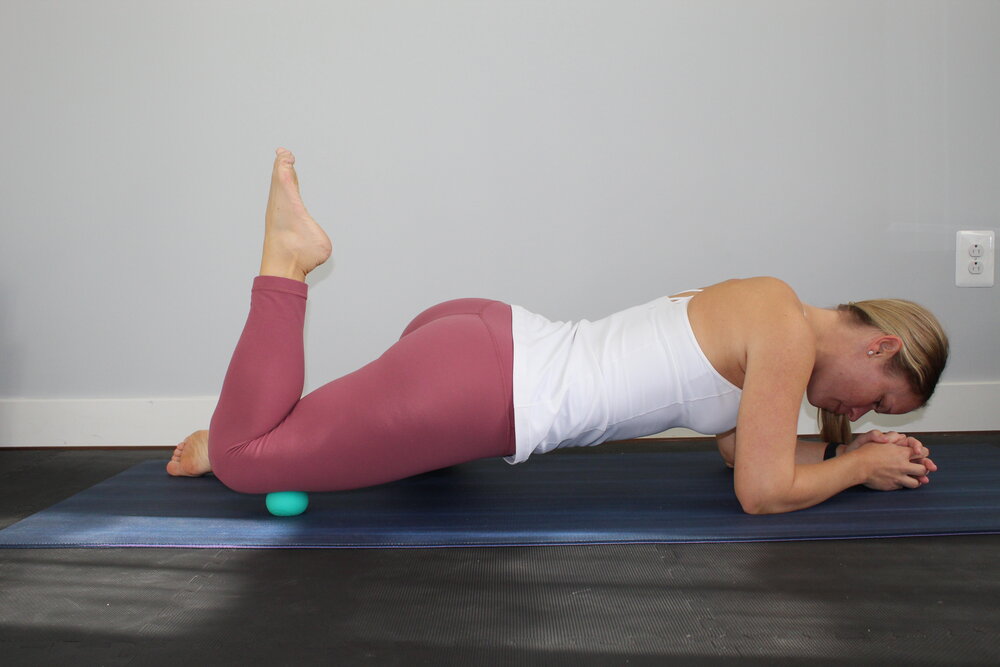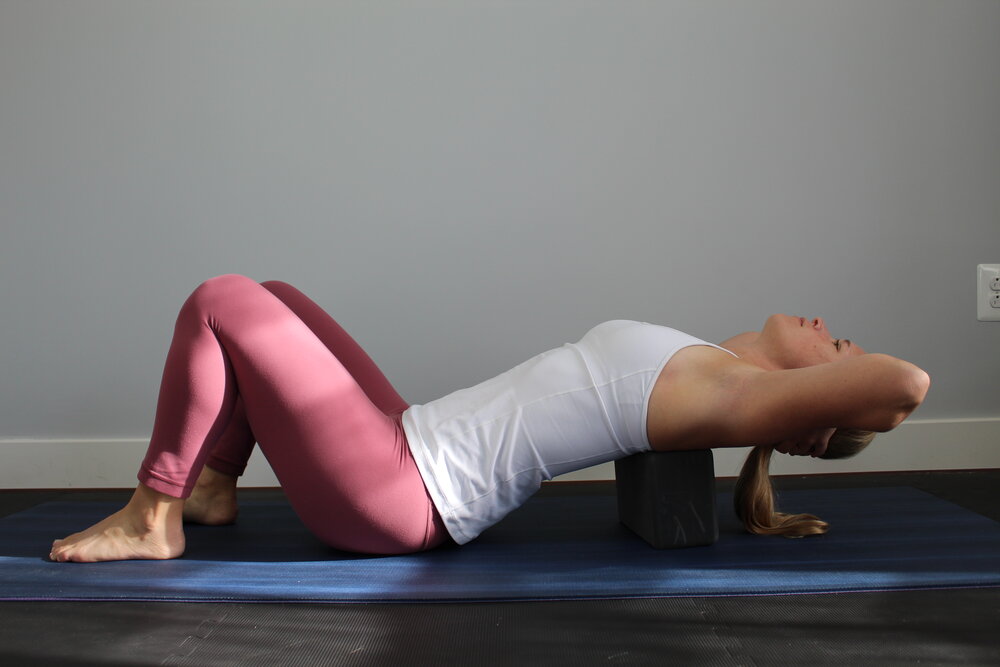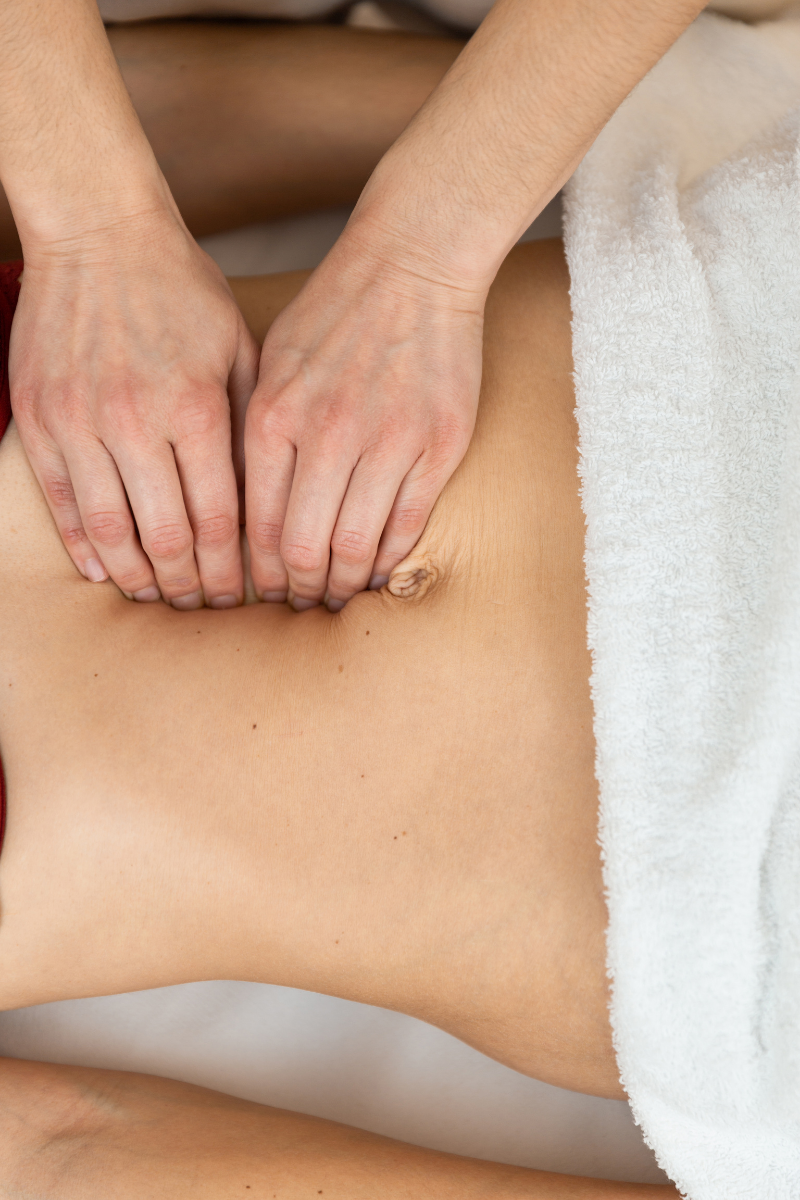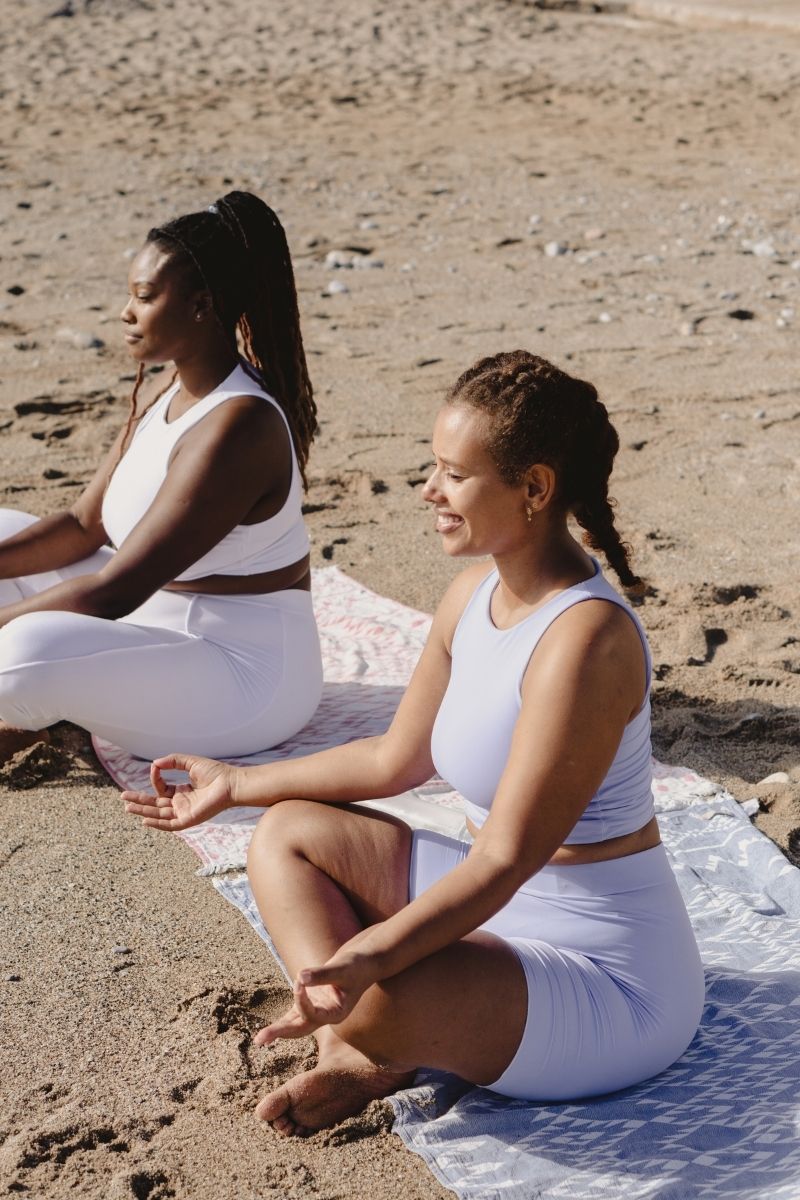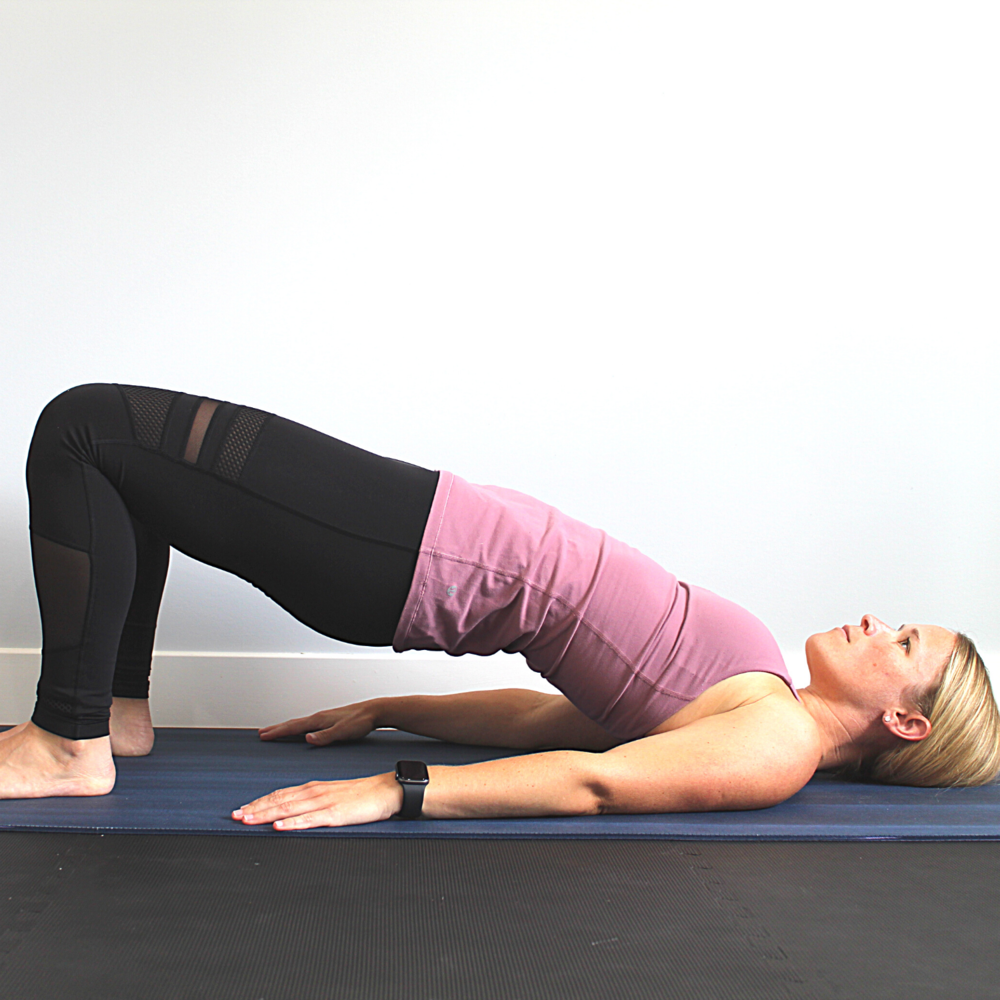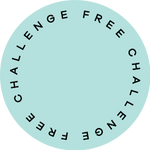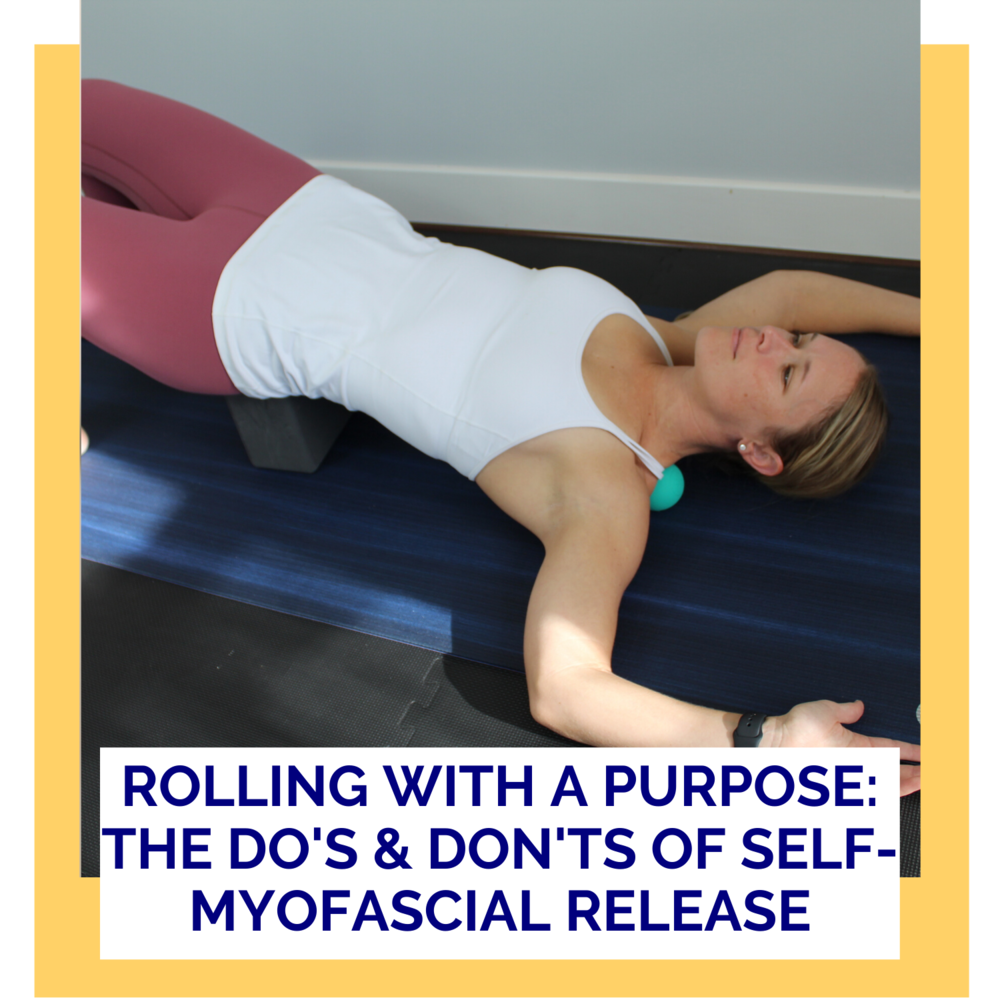 Ouch…! You just want that nagging pain in the front of your hip or along your shoulder blade to go away! So, you jump on your foam roller, roll up & down, side to side, all over hoping to get rid of that pain! What if there was a technique to rolling to better help you alleviate those trouble spots? A methodical way that you can use to get rid of those aches & pains for good…it’s called self-myofascial release! First, what is fascia? Our bodies are covered in connective tissue called fascia. Imagine your fascia as this interconnecting web, kind of like a body suit that helps support, connect, and protect different types of tissues throughout our body. Our fascia can adapt over time and recover, however in order to do so it needs to be/stay hydrated. Self-myofascial release techniques help to hydrate our fascia, allow for remodeling of our tissue, and helps our tissues get back to gliding and moving. Our “body suit” needs to be able to move and glide, and if for some reason it cannot, we can develop those trigger points or aches and pains. Secondly, what the heck is self-myofascial release? Why rolling just any which way is not the most effective thing? Self-myofascial release is using various tools such as foam rollers, balls, and other props to manipulate your muscles and fascia. Self-myofascial release is a technique that will help empower you to: drastically improve your mobility, ease your aches & pains, help improve your performance, aid with injury prevention. In order to get all of the amazing benefits of self-myofascial release, you want to make sure you know what muscle you are targeting, the direction those fibers run, apply the correct amount of pressure, and roll for that right amount of time (30-60 seconds in each spot)… rolling with a purpose. After using this technique, it is equally import to follow up with either more mobility activities or stability training or bother to create that balance and get rid of those aches and pain
Ouch…! You just want that nagging pain in the front of your hip or along your shoulder blade to go away! So, you jump on your foam roller, roll up & down, side to side, all over hoping to get rid of that pain! What if there was a technique to rolling to better help you alleviate those trouble spots? A methodical way that you can use to get rid of those aches & pains for good…it’s called self-myofascial release! First, what is fascia? Our bodies are covered in connective tissue called fascia. Imagine your fascia as this interconnecting web, kind of like a body suit that helps support, connect, and protect different types of tissues throughout our body. Our fascia can adapt over time and recover, however in order to do so it needs to be/stay hydrated. Self-myofascial release techniques help to hydrate our fascia, allow for remodeling of our tissue, and helps our tissues get back to gliding and moving. Our “body suit” needs to be able to move and glide, and if for some reason it cannot, we can develop those trigger points or aches and pains. Secondly, what the heck is self-myofascial release? Why rolling just any which way is not the most effective thing? Self-myofascial release is using various tools such as foam rollers, balls, and other props to manipulate your muscles and fascia. Self-myofascial release is a technique that will help empower you to: drastically improve your mobility, ease your aches & pains, help improve your performance, aid with injury prevention. In order to get all of the amazing benefits of self-myofascial release, you want to make sure you know what muscle you are targeting, the direction those fibers run, apply the correct amount of pressure, and roll for that right amount of time (30-60 seconds in each spot)… rolling with a purpose. After using this technique, it is equally import to follow up with either more mobility activities or stability training or bother to create that balance and get rid of those aches and pain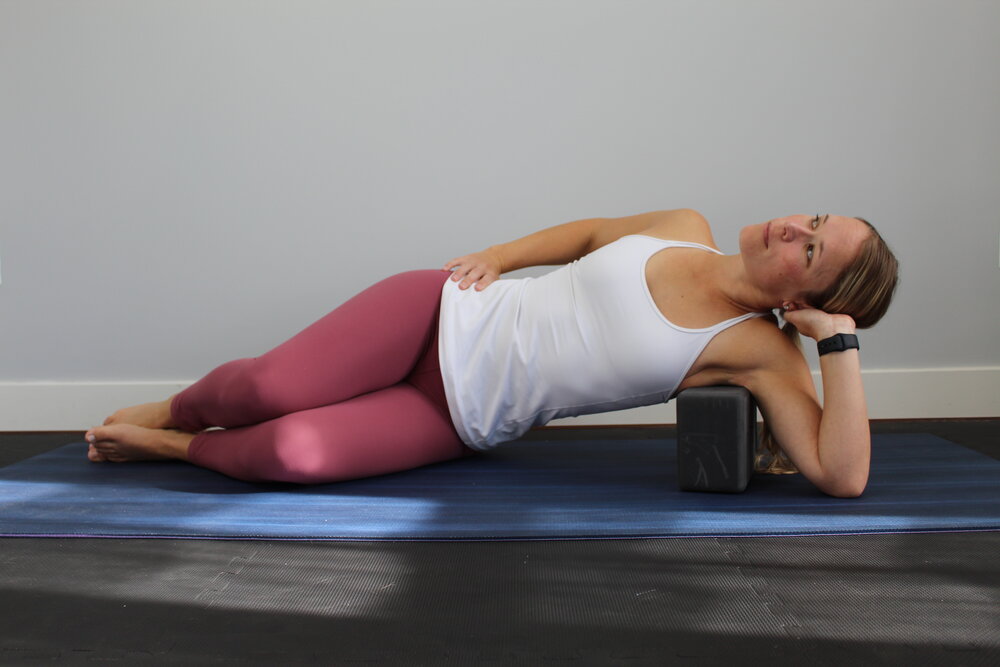
“It is one of the most powerful tools I have come across in my 10+ years of helping people kick their pains to the curb and getting back to what they love to do.”
The Do’s
-
30-60 seconds in each spot (if overdo can lead to more tightness)
-
Try to work around the area- take a more indirect approach- look at areas above or below trouble spots
-
Know which muscle you are targeting & fiber direction
The Don’ts
-
More is not necessarily better- can lead to feeling more restriction
-
Roll in any which direction without a purpose
-
Stop if reproducing or making your pain worse, sharp or shooting pains
-
More pressure is not necessarily better
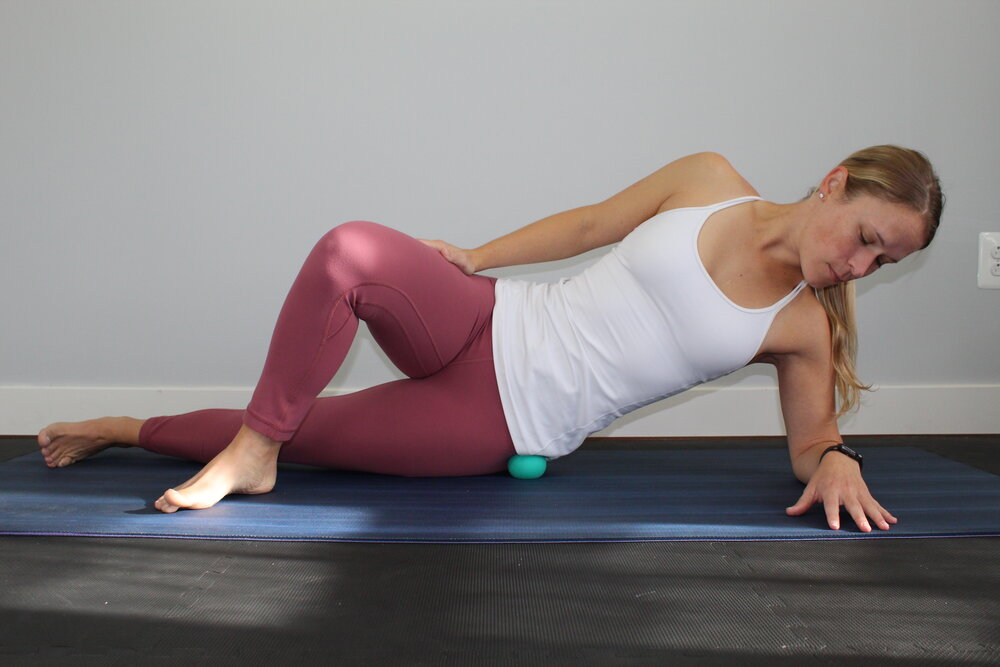 Do you have hip or knee pain? Pain with going up and down stairs, running, or squatting? Do you think that your IT band could be the culprit?!? You might want to check out your TFL! If this muscle is really tight it can pull on your IT band giving you some trouble. Try this self-myofascial release technique: Find the bone in the front of your pelvis move 1-2 inches to the side, Place the ball on that spot & lay down over the ball, Move around until you find that spot…you’ll know where, Breathe & sink into the ball for 30-60 seconds, See if you can find 1 other spot & repeat. So, let’s get back to that nagging hip pain! I love this self-myofascial release technique to help improve your hip mobility & ease the pain. Check out this technique here on my Youtube channel. Now, there can be a number of reasons for this pain, but give this a try followed by some strengthening exercises. I know you will notice a dramatic difference, especially knowing some key do’s and don’ts of rolling!
Do you have hip or knee pain? Pain with going up and down stairs, running, or squatting? Do you think that your IT band could be the culprit?!? You might want to check out your TFL! If this muscle is really tight it can pull on your IT band giving you some trouble. Try this self-myofascial release technique: Find the bone in the front of your pelvis move 1-2 inches to the side, Place the ball on that spot & lay down over the ball, Move around until you find that spot…you’ll know where, Breathe & sink into the ball for 30-60 seconds, See if you can find 1 other spot & repeat. So, let’s get back to that nagging hip pain! I love this self-myofascial release technique to help improve your hip mobility & ease the pain. Check out this technique here on my Youtube channel. Now, there can be a number of reasons for this pain, but give this a try followed by some strengthening exercises. I know you will notice a dramatic difference, especially knowing some key do’s and don’ts of rolling!
Do you have questions, not sure where to start, having some pain with rolling, or just not sure which will benefit you the most? Email me and I am happy to help you!
Want to learn even more about rolling with a purpose? Click here to learn 5 Moves with a Foam Roller!
Happy Rolling with a purpose!


Dr. Melissa Oleson PT, DPT, E-RYT, CDNT
-
Doctor of Physical Therapy
-
Bachelor of Nutritional Science
-
Certified Dry Needling Therapist
-
Registered Yoga Teacher RYT 200
-
Integrative Nutritional Health Coach
-
Working toward RYT 500 hours with Yoga Medicine

